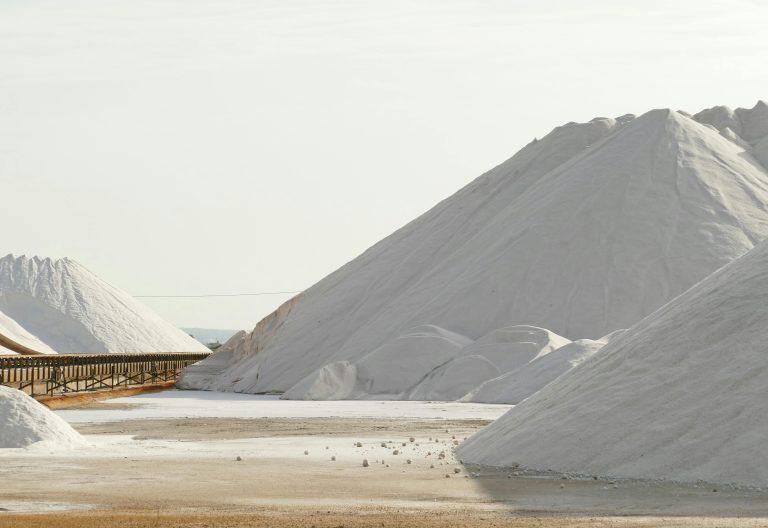UN conference pushes for deeper ocean protections amid rising threats

The debate at the just concluded United Nations Ocean Conference centred on how humanity’s survival is grounded on how we manage our relationships with the ocean and the environment.
The third UN ocean summit in Nice, France, witnessed various entities showcasing their efforts to protect marine biodiversity, combat ocean pollution and support sustainable ocean economies.
Convened to support the implementation of Sustainable Development Goal (SDG) 14 (Conserve and sustainable use of oceans, seas and marine resources), the event took place under the theme ‘Accelerating action and mobilising all actors to conserve and sustainably use the ocean’.
Deep-seabed mining, one of the most contentious and unresolved issues in ocean governance, was a recurring topic at the forum.
“As we explore the potential of one of the planet’s final frontiers, let us work together to reach higher goals,” said International Seabed Authority Secretary-General Leticia Carvalho.
Shared home
Established under the UN Convention on the Law of the Sea (the constitution of the ocean), the Authority is the only intergovernmental body mandated to manage natural resources in areas of the seabed beyond national jurisdiction as the common heritage of humankind.
Carvalho noted that more than 1.9 million square kilometres of the Clarion-Clipperton Zone (a geological submarine fracture zone located in the North of the Pacific Ocean between Mexico and Hawaii) are protected from any future exploitation.
The zone stretches around 4,500 miles and has an area of approximately 1,700,000 square miles, which is just under half the size of the land area of the United States.
Citing remarks made at the conference by Brazil’s President Luiz Inácio Lula da Silva and UN Secretary-General António Guterres, she emphasised: “The deep seabed cannot become the Wild West. Taking a position for or against deep-sea mining is a decision that lies squarely with countries”.
It’s a view that was echoed by the International Union for Conservation of Nature (IUCN) Director General Dr Grethel Aguilar, who said, “Let us think of the ocean as our one shared home, the blue water flowing in our veins. It is the ocean that gives us life. Nature-based solutions must be part of the path for marine protection, guided by the IUCN Global Standard.”
The marine protected areas must demonstrate effective management and deliver measurable positive conservation outcomes as per the IUCN Green List standard for protected areas, she explained.
Aguilar invited UNOC3 participants to the IUCN World Conservation Congress, the world’s largest gathering for nature-empowering transformative conservation, this October in Abu Dhabi, to advance the Nice Ocean Action Plan together.
At the 2022 Lisbon Ocean Conference, UNDP launched Our Ocean Promise, a commitment to SDG 14 through better ocean governance, sustainable finance and local stewardship.
With goals to sustainably manage over 15 million square kilometres of ocean space, empower 1,000 coastal communities and mobilise $1 billion in ocean finance, UNDP is addressing the estimated $1 trillion in annual losses from unsustainable ocean use.
UNDP is ready to support countries in ratifying the high seas treaty and has pledged to strengthen support for small island developing states (SIDS) and least developed countries (LDCs) through its new strategy launched in Nice.
UN Framework Convention on Climate Change’s Jasdeep Randhawa recalled that a major outcome of COP27 in Sharm el-Sheikh was the establishment of the Ocean and Climate Change Dialogue – a biannual, party-led platform that has become essential for sharing knowledge, building partnerships and advancing ocean-based climate solutions.
To date, the Dialogue has featured 600 mitigation and adaptation solutions across diverse themes, including fisheries, food security, blue carbon ecosystems, marine biodiversity, coastal resilience, ocean technologies and climate finance, she said.
The UN Capital Development Fund, a non-credit-rated hybrid development and finance institution, is advancing patient capital efforts that can support a longer-term position and promote recognition of ocean assets as natural capital.
It launched the Ocean Initiative, a collaborative effort involving multiple UN agencies, to mobilise investments and promote resilient ocean economies.
“The science is clear,” Office of the High Representative for the LDCs, SIDS, and landlocked countries Rabab Fatima said: “These states bear the heaviest brunt of climate-induced ocean challenges, from sea level rise and ocean acidification to biodiversity loss and declining fisheries”.
She called on member states to scale up blue finance, build up a coalition for sustainable connectivity via modernising land, river and sea routes, and strengthen coastal resilience and early warning systems.
“We have built systems that create wealth by depleting wealth, generating prosperity by undermining prosperity, said UNCTAD’s Onno Hoffmeister. Over 80 per cent of global trade moves by sea, employing almost two million people. Shipping contributes three per cent of global greenhouse gas (GHG) emissions.
Yet, SDG 14 receives the least official development assistance (ODA) or any SDG – $3 billion in 2022 against the target of $175 billion.
“Our survival is predicated on how smart we are in managing our relationship with our oceans and environment,” said the Pacific Islands Forum Secretary General Baron Divavesi Waqa, who highlighted the critical need for international cooperation to protect the Pacific Ocean, which faces unprecedented threats from climate change.
He called for increased funding for ocean conservation and an end to illegal fishing.
The Green Climate Fund (GCF) has committed over $1.3 billion in climate finance, leveraging $1,5 billion in COVID-19 recovery funds for 33 ocean-related projects across 70 countries.
These projects aim to reduce GHG emissions by 5.4 megatons and support sustainable fisheries and ecosystem restoration. GCF has allocated more than $2 billion to SIDS, representing one per cent of its global portfolio.
International Whaling Commission’s representative highlighted the organisation’s crucial role in ocean conservation, with 88 member states and a repository of global data on cetacean species.
The commission addresses threats like bycatch, which kills over 300,000 animals annually, through initiatives like the bycatch mitigation programme.
Canada’s delegate, Stéphane Dion, Canada’s Ambassador to France, said her government is committed to enhancing marine biodiversity protection, aiming to protect 30 per cent of its ocean by 2030 as part of the Kunming-Montreal Global Biodiversity Framework.
It has already conserved more than 15 per cent of its ocean, covering nearly 894,000 square kilometres.
“The alarm is ringing,” said Congo’s representative, citing the threats to the ocean, including massive overfishing, plastic pollution and reckless mining projects. Congo has a beautiful stretch of coastlines and beaches.
Solutions are “within our grasp”, she said, highlighting national and regional initiatives to protect their parts of the marine ecosystem.
She announced that her country would ratify the high seas treaty and issue Congo Basin blue bonds, urging developed countries to commit to environmental justice.
Peace Boat, a civil society organisation, is preparing to launch Ecoship, a next-generation low-emission vessel. Equipped with renewable energy systems and onboard research and education facilities.












